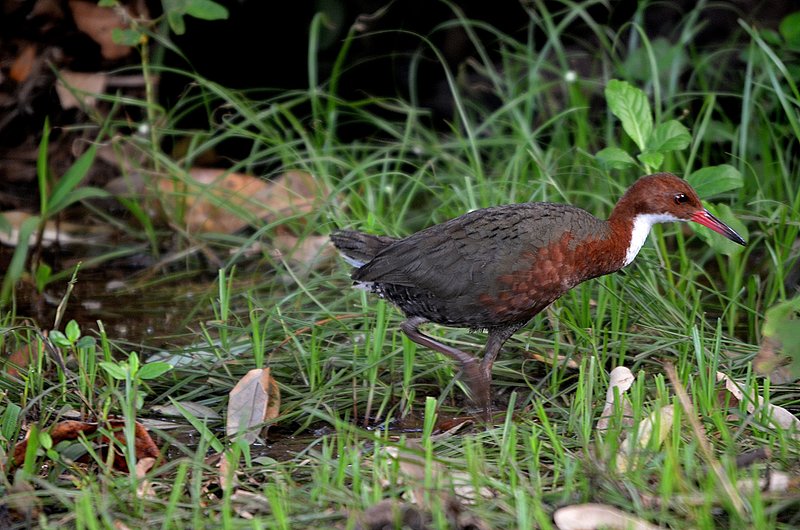Extinct 136 thousand years ago, the species of birds "Cuvier shepherdess" revived in the Seychelles
Cuvier's shepherd (Dryolimnas cuvieri) lived on islands where there are practically no predators. This played a very cruel joke with one of its types.
Cowgirls - a family of white-chilled birds the size of an ordinary chicken, living on islands in the Indian Ocean. They constantly colonized new isolated islands in the ocean. Although these islands are free from predators, they very often become victims of natural disasters. Unable to fly birds quickly die as a result of this.
One of the cowherd species had the ability to fly, which allowed him to move to the Seychelles. On these islands, as a result of evolution, the bird lost its ability to fly. However, 136 thousand years ago, the atoll completely covered the ocean after the flood and the view formed there disappeared from the face of the planet.
And then one day, the species of birds of the “Cuvier shepherdess” that died out over 130 thousand years ago was revived in the Seychelles. This event happened due to iterative evolution. An opening article is published in the Zoological Journal of the Linnean Society.
Iterative evolution is a completely special case of parallel evolution, which consists in the development of the same species from the same ancestor, but at completely different times. This phenomenon is very, very rare, therefore, all scientists were very surprised by the case of the "revival" of a bird that had died more than 130 thousand years ago. This is absolutely the first case in nature when iterative evolution has been noticed precisely for this genus, and one of the most significant examples in the history of all birds on our planet.

Cuvier's cowherd (Dryolimnas cuvieri) / photo Alexandre Laubin
Cowgirls - a family of white-chilled birds the size of an ordinary chicken, living on islands in the Indian Ocean. They constantly colonized new isolated islands in the ocean. Although these islands are free from predators, they very often become victims of natural disasters. Unable to fly birds quickly die as a result of this.
One of the cowherd species had the ability to fly, which allowed him to move to the Seychelles. On these islands, as a result of evolution, the bird lost its ability to fly. However, 136 thousand years ago, the atoll completely covered the ocean after the flood and the view formed there disappeared from the face of the planet.
And then one day, the species of birds of the “Cuvier shepherdess” that died out over 130 thousand years ago was revived in the Seychelles. This event happened due to iterative evolution. An opening article is published in the Zoological Journal of the Linnean Society.
Iterative evolution is a completely special case of parallel evolution, which consists in the development of the same species from the same ancestor, but at completely different times. This phenomenon is very, very rare, therefore, all scientists were very surprised by the case of the "revival" of a bird that had died more than 130 thousand years ago. This is absolutely the first case in nature when iterative evolution has been noticed precisely for this genus, and one of the most significant examples in the history of all birds on our planet.

Cuvier's cowherd (Dryolimnas cuvieri) / photo Alexandre Laubin
